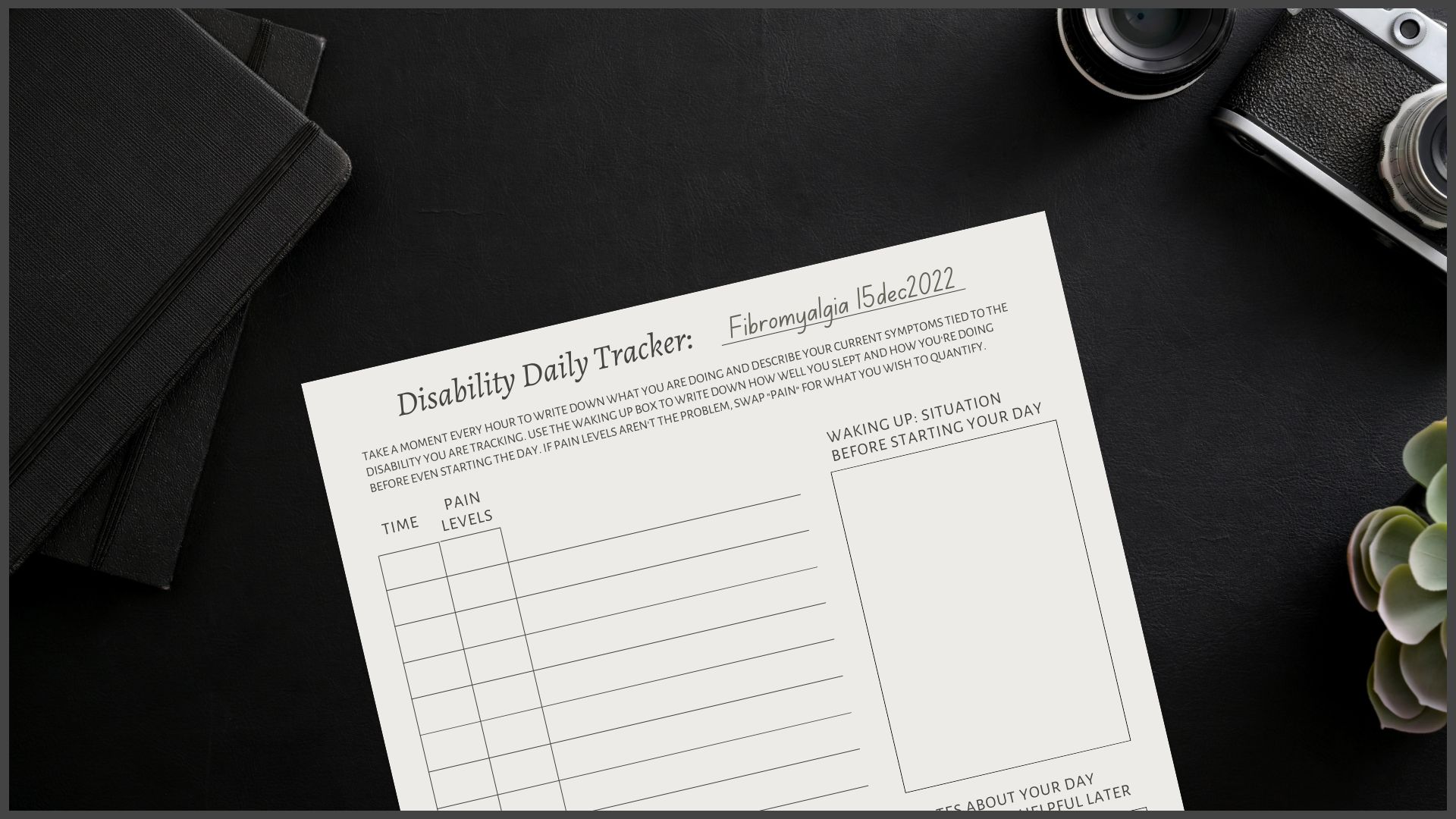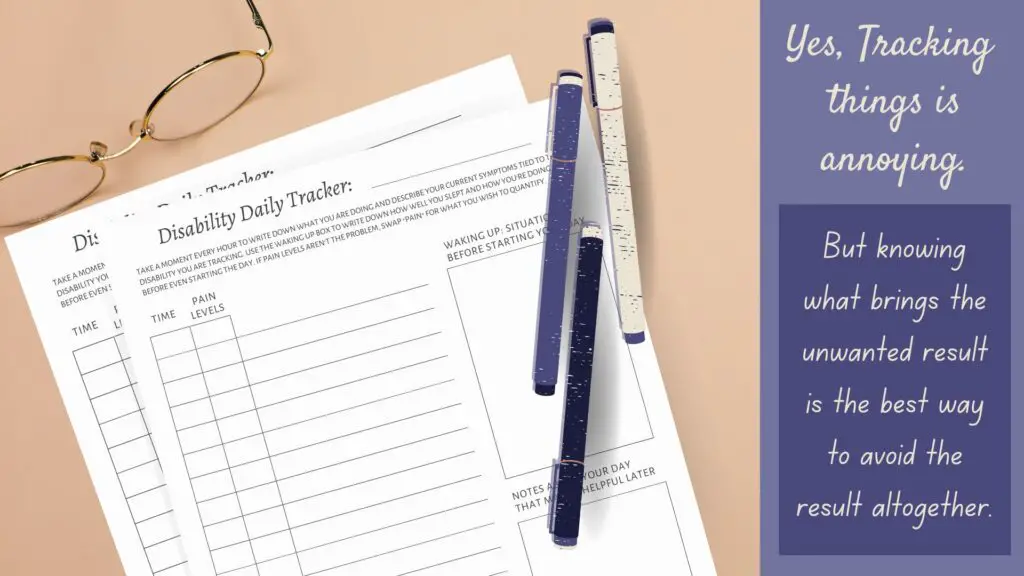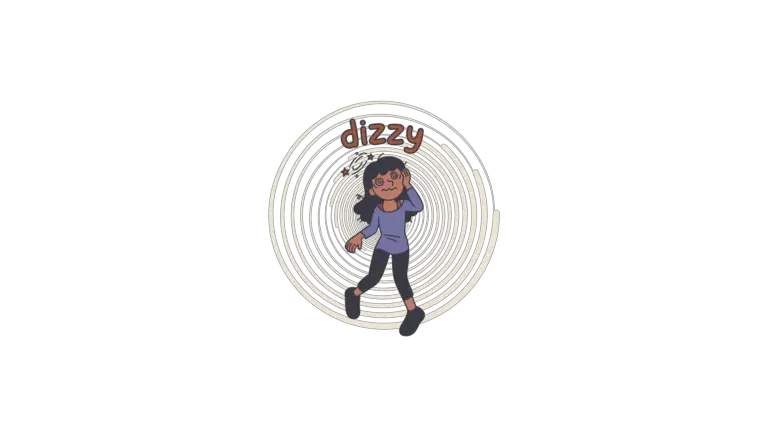Cause and Effect: Disability Edition
Disabilities are often seen as limitations; I must admit that I myself look at them that way fairly often. However, being disabled doesn’t mean you can’t bend these limitations and define which boundaries can be played with. It only means one has to get a little creative… And I can help you with that.
When it comes to bending the rules of your limits, the first thing to do is to learn where your limits are. Exactly where does your disability say “nope” ?
It may manifest in many ways, such as:
- Feeling extremely sore the next day(s)
- Starting a migraine directly after or towards the end of the activity
- Waking up some old wound pains or specific chronic pains
- Mentally draining you beyond comfort, feeling tired, overwhelmed and possibly cranky
- Any mood swings may indicate that an invisible boundary was crossed, pay attention to your moods and what your body tries to tell you
- For people with leg pains, it may show in your level of need the next day; for example, if you usually don’t need to use a cane at home, but after an activity, you need the cane, that is certainly an indicator.
Okay, but…
Trust me, I hear you. Sometimes it’s not about listening to our bodies, and more about what is expected of us. If, like me, you are not on disability, you have specific responsibilities that include making enough money to cover rent, groceries etc, keep your living space fairly clean; and if you have kids, you need to help take care of them or even do it by yourself, etc.
We have to juggle so much: and then we add the disabilities into the mix.
I am not trying to sell you into doing more things than you can, but rather, I want to give you an idea of how to take your current daily work load and chores and make it easier for you to deal with.
Productivity as we know it, or rather, how we see productivity, is harmful; I would never promote or encourage that system. Instead, I want to show you how you can minimize your symptoms and side effects, not for the sake of productivity, but for a better quality of life.
What we choose to do with that better quality of life will depend for each person, of course. I encourage you, however, to spend some of that newfound energy and time for fun, rest, and learning, rather than a bigger workload.
Step 1: Know Thyself
As previously mentioned, knowing HOW your disabilities are affected by your daily life is just the beginning. I have many disabilities myself, so I had to do it a few times, but the best way to do it is to track one disability for at least one week. My advice would be three weeks, but even just one will help!
That would include taking note of your day, preferably hourly, and write down what is happening/what you are doing and how your disability is currently manifesting.
I also encourage you to write a bit more in the morning and before bed, to fill in the gaps or to add anything you forgot during the day.
That method only asks you what is happening right now, hourly. Once the week ends, you can look at the full week and see if any patterns emerge from what you’ve written. For example, which daily task immediately results in a pain flare? Or maybe, every day that you skip breakfast, your ADHD is exponentially worse?

You do not need to wait on a certain day or hour; just start.
Seriously, just start. I promise you that your 1-week tracking will not have better results because you started neatly on a Monday morning. Yes, I’m talking to the perfectionist in you; I have one of those too!
There are so many possibilities of cause and effect to cover that I cannot list them all in this article, but chances are that patterns will be fairly easy to recognize. I really do suggest doing three full weeks, as it shows a lot more information and the patterns become even more obvious. Additionally, some smaller, lesser patterns could show better in a 3-week period of tracking, whereas the 1-week tracking could miss them entirely.
See also: Why ADHD Is So Difficult To Manage
Step 2: Taking Stock
So, we have 1 to 3 weeks of info, we noticed patterns, figured out a couple of things… now what?
Now is the time to make a list of these causes and effects. Depending on how many patterns you found, it may be overwhelming to think about how to make all the patterns better; don’t worry about that yet. All you need to focus on at the moment is to make a list that has all the information needed for each pattern, which action triggers which symptom, etc.
Pro tip: For some, that may be easier to do on a Word or Excel document. I liked using Excel (that’s a lie, I hate Excel, but I use a similar system) to easily rearrange patterns that were similar so I could see the whole picture better.
Now, I want you to take a look at that list and watch for more patterns or “interesting coincidences” that it may show you. For example, maybe you’ll notice that three things on your list are actually triggered by the same thing! That’s when you can rearrange things in a way that makes more sense for you. Maybe you’ll want to group up things that are triggered by similar things (i.e. lack of sleep as a trigger) or you’ll prefer to group them up by the similar outcomes (i.e. everything that leads to a pain flare)
There is no wrong way to do it; it’s all about how you wish to see things linked together and what works best for you.
Step 3: The Conspiracy Theory
Don’t mind me, I’m just having fun making up silly(and dramatic) title names. Still, now that you’ve looked into your tracked hours and made a list of patterns, you possibly found some coincidences (or not, that’s fine too!) and I want you to over-analyze everything.
Let’s take “skipping breakfast” as an example again. You would analyze that in this way:
- Am I not hungry in those mornings? If so, am I hungry a bit later?
- Am I skipping breakfast because I woke up late those days and I don’t have time for it?
- Did I stay up very late, or go out partying, etc?
- Am I sleep-deprived on those days?
- Am I nauseated in those mornings? If so, what causes the nausea? (for me, sleep-deprivation = nausea, every time)
- Am I avoiding something or someone on those days?
- And so on.
Sometimes it can be as easy as noticing that ____ triggers you and to delete that from your day. Other times, you’ll need this analysis to figure out where that trigger leads, so you can find the original action that sets everything in motion. It can go as far as the day before or sometimes even earlier!
the “mind map”
It may be helpful to you to use the mind map technique. The information that you’re working with has a lot of ifs, buts and whens, as well as the possibility that different things lead to the same outcome, or that the same trigger leads to many different outcomes. Because of that, a list will have limitations that a mind map kind of system will not. There are plenty of systems online to make mind maps for free (here is a list of good, free ones), or you may also use my personal favourite free tool, OneNote. I just love the malleability of it!
If you use OneNote, here are some ways you can use:
- Make a notebook dedicated to your cause and effect research. Each page can be about one trigger, one cause, etc.
- Have a master page (I lovingly call mine “ONGOING BRAINDUMP TRAINWRECK” in all caps because I find it funny) in which you can go all “red string” on it and link all the things to each other in a beautiful, colorful mess that you will hopefully understand.
- Take the time for the ✨aesthetics✨ and make pretty little boxes with colors and arrows and stuff. Just be aware that it will eventually look like a mess anyway, despite your best efforts (trust me, I tried)
- You can also make a bit of an Excel-like table to keep the main info, then make the mind-map next to it. OneNote is just great for having a canvas that can always expand. You won’t run out of space!
All of these can be done with pen and paper, as well. Whichever works best for you… but beware of the hand cramps. Ask me how I know!
See also: Laundry Hacks for ADHD

Step 4: The Experiment
What you do with the information is up to you. Once you have the trail of actions that leads to the trigger that leads to the disability acting up, you have a clear view of each step. I refer to it as a sequence, since I’ve noticed that it usually takes more than just one thing to trigger a bad reaction.
Short example of how to use this information
You have the effect, and you have the cause.
How do you want to avoid the end result? Maybe the very first two steps of the sequence you identified are unavoidable, but you can choose not to do the third step of the sequence, or do it differently. If you do that, does it stop the whole thing, or do you still end up in a flare up? Or does it flare up in an entirely new, undiscovered way?
Oops. Let’s try something else then!
Trial and Error, or as I call it: F*cking around and finding out.
The trial and error phase will possibly make for interesting complications or situations. We can’t just figure it out in one go, right? That would be too easy.
If you want to make some fairly big changes, I suggest telling your loved ones (or at least whoever lives with you) beforehand. That may help them understand why your behavior suddenly changed, and you can refer to that as a reason why you’re doing something differently if someone asks you about it.
Keep in mind, it’s not really about having to explain yourself to them, and more… that it’s the polite thing to do.
As someone with lots of anxiety, I’d rather know in advance about things that could impact me or simply seem odd enough to make me overthink. If you’re prone to anxiety and overthinking, I’m sure you’ll understand that talking about these changes would be helpful to the people close to you.
What Now?
I’m not gonna lie to you and say that this can fix everything. Some things will not budge. Some limitations may be impossible to push, bend, or otherwise alter.
However, for you to be able to change some triggered responses, you’ll need to know them all (or most of them, anyway). Don’t be disappointed if some things can’t be worked with; focus on the ones that have enough wiggle room for you to find a better way to deal with it.
The cause and effect theory applies in practically everything in our lives, whether we want it to or not. By tracking the causes and effects in your life, you can notice a lot of ways that unexpected causes result in effects you would have never linked together.
And that’s the beauty of it! It’s also a way to cope with disabilities that I rarely ever saw elsewhere. Except therapy, but therapy is expensive, and it rarely focuses on the physical effects.
The usual approach to disability, mental or physical or both, is often to treat the effects. Unfortunately, taking care of the end results doesn’t prevent it from happening over and over again. If it is possible to identify and eliminate the cause linked to the effect, that will make a much bigger impact on your life.
Tracking to backtrack
I call it tracking, but really, this technique is a lot more about backtracking. The origins of your symptoms are what you are looking for, and they are what will influence the end result. If you make a habit to know what ultimately causes problems, you will not only be one step ahead of your disability, but you could also be able to correct course mid-way, as well as prevent things that would inevitably bring you to the effect you want to avoid.
“Knowledge is power” they say. And they are right.
I don’t know about you, but I often see the whole “knowledge is power” thing as a big, plot twist kind of thing in stories. It’s not wrong, by any means, but I believe that it shouldn’t be kept as a trope that benefits only the cunning, chaotic neutral (at best) characters of our favourite shows, books and videogame storylines.
Knowledge IS power. Knowing your own body, disabilities, and identifying the triggers (causes) to your daily struggles (effects) will give you power that can change your life.
If you are interested in it, make sure to sign up for my newsletter to receive my simple and easy to use Disability Tracker sheet!

